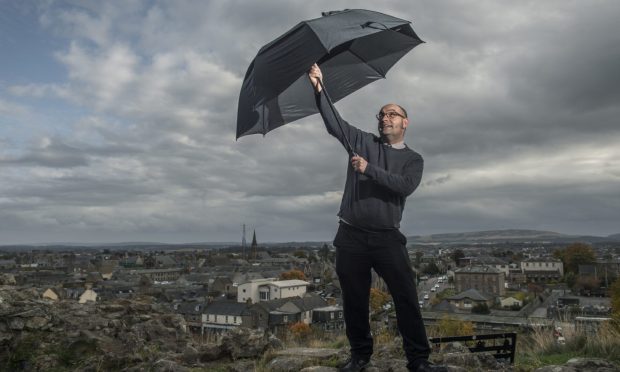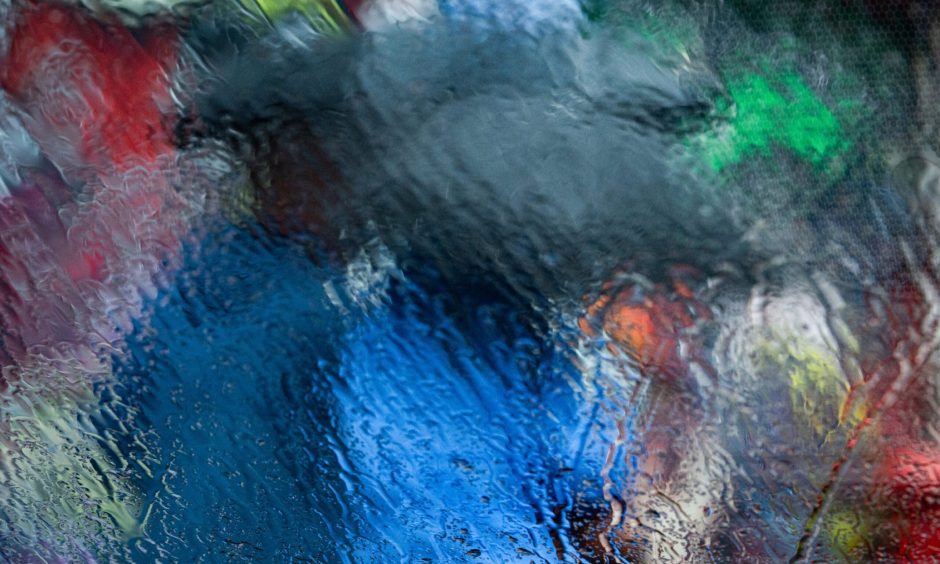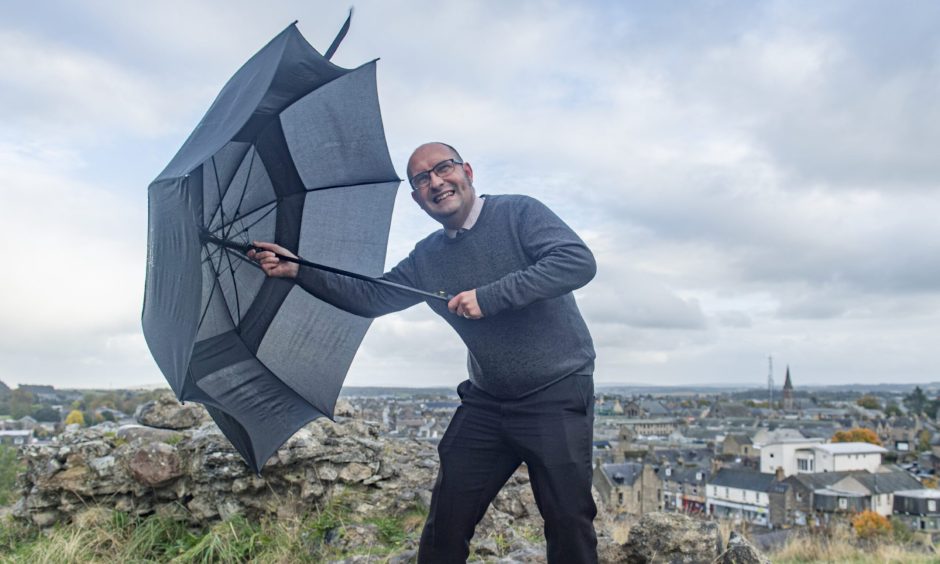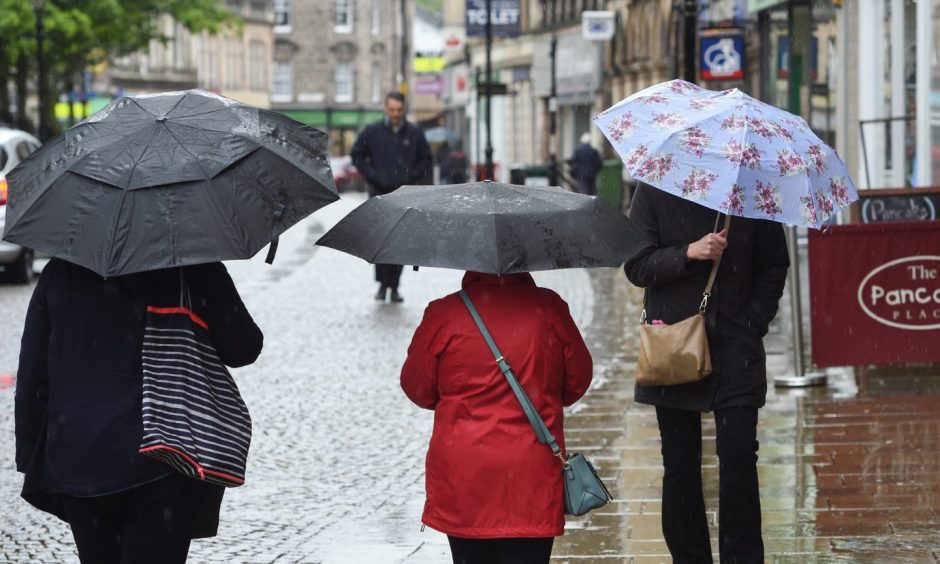One of the first things I was told when I moved to Elgin was “Welcome to Scotland’s driest town”.
At this time of year, it doesn’t always feel that way with dark nights and bad weather creeping relentlessly more into the day.
“Driest town, really?” – I catch myself saying often. Usually when pulling my bins out on the week they’re all collected at once.
In the summer it can feel like the rain comes down in stair rods, causing short-term flooding at the bottom of my street, outside Lidl and on the west end of the High Street where our P&J office is.
However, in recent years it has been clear that the water levels on local rivers can drop to extremely low levels at times.
So, is Elgin really Scotland’s driest town? I decided to find out.
Why is Elgin so dry?
Elgin is in the north of Scotland, not a region with a global reputation for its nice weather.
It can certainly get pretty cold during the depths of winter, but that doesn’t necessarily mean it’s pouring with rain all the time.
The answer about why Elgin is so dry lies in the geography of the landscape.
With the prevailing winds carrying the weather predominantly coming from the west and the south, most of the rain falls on the Cairngorms before it reaches the Moray coast.
The Met Office told me that the whole of the east of Scotland benefits from “rain-laden winds” from the west “drying out” as they pass over the country.
It will come as no surprise to anyone to learn the East Coast of Scotland is drier than the West Coast.
However, when the wind changes and blows hard from the North Sea, Elgin and the rest of the Moray coast are certainly anything but dry.
Is Elgin actually Scotland’s driest town, though?
No, but it’s pretty close.
Now we know why Elgin is exceptionally dry, how does it compare with the rest of the country?
For this I used Met Office data compiled over 30 years between 1991 and 2020 to calculate an annual average.
While Elgin doesn’t have a weather station itself, there are two nearby at the Lossiemouth and Kinloss military bases.
The figures reveal that the region is exceptionally dry for Scotland, recording just 42% of the average national rainfall. Only three locations are drier.
Striking local differences were revealed too with Keith, which has a higher altitude, recording 32% more rain every year than Lossiemouth despite being just 21 miles away.
Meanwhile in the Cairngorms, Aviemore records 46.8% more rain than Lossiemouth with about 50 miles separating the communities.
So it’s clear that Kinloss and Lossiemouth benefit from the low altitude and the shelter and protection from the hills.
Are they the driest in Scotland though? Afraid not, Tain, Arbroath and Dunbar all have lower rainfall averages according to the Met Office.
How Elgin rain is different
When analysing the rainfall patterns in Elgin compared to the rest of Scotland, it also becomes apparent that the rain falls at different times of the year here too.
Nationally, the wettest months are, perhaps predictably, December and January.
However, in Lossiemouth the depths of winter are actually drier than June and July.
Perhaps that won’t come as much of a surprise given our recent summers, but while large amounts of snow are falling on the Cairngorms to the south Elgin, Lossiemouth and Kinloss remain exceptionally dry in the coldest months.
October is the wettest month of the year in Lossiemouth, with March and April the driest.
Don’t get me wrong, I’m not saying the weather in Elgin is like the Copacabana. It can still be pretty wild.
It’s just you’re less likely to need a brolly when you’re battling it.
Is Elgin drier than south coast of England?
Alright, Elgin can’t claim to be the driest town in Scotland, but I still decided to check whether it can claim to have less rain than some holiday destinations on the south coast of England.
Hopefully these figures can give you some ammunition next time a friend, relative or work colleague dismisses the weather in Moray as wet and miserable.
Again, these figures are annual averages compiled by the Met Office between 1991 and 2020.
- Newquay – 1,019.39mm
- South England average – 807.99mm
- Eastbourne – 792.63mm
- Bognor Regis – 733.91mm
- Lossiemouth – 670.6mm
- Kinloss – 662.68mm
The average temperature of South England may be 2C higher than it is in Lossiemouth, but we’ll let them enjoy that heat from under an umbrella.
The driest place in England is Shoeburyness, near Southend in Essex, which recorded just 526.78mm of average annual rainfall.
Everything you need to know about Elgin
- Is Elgin a long-established historic city or a large town? We try to clear up the confusion
- Everything you need to know about Dandy Lion: Elgin’s most colourful and divisive resident
- Elgin Cathedral: The rise, fall and rise of the Lantern of the North




Conversation